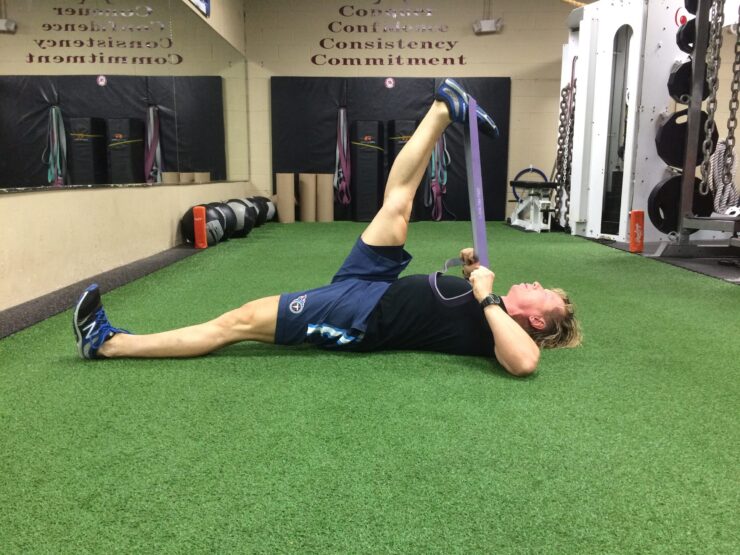The rise of sedentary digital jobs has correlated with a steady uptick in postural problems from extensive sitting and repetitive tasks. Stiff necks, tight shoulders, hip discomfort – workers experience restricted mobility in various ways, leading to compounding fatigue and injury likelihood over years. However, carving out brief body movement sessions to activate circulation and gently lengthen tightened tissue brings immense benefits without hampering workflow.
Consistent work stretching enhances comfort, stress relief, focus and injury resilience amid largely stationary office environments. Through this guide, explore assessment cues, integration strategies and customized routines that unburden the body while keeping productivity on track. The insights instill autonomy in caring for physical needs at work, while inspiring a Wellness culture of supported movement and self-care from the top down. Let’s stretch workplace restrictions toward greater freedom and mobility!
Taking Stock of Stiff Spots

Before determining targeted solutions, assess postural habits honestly to pinpoint which muscle groups bear the most residual tension from work. Scan for tightness symptoms like strain reaching overhead, difficulty twist to check blindspots driving or lower back fatigue.
Evaluate stiffness severity too – is it a nagging nuisance flaring up during lunges at the gym? Or lost range severely impacting putting on shoes and other mobility? Track whether soreness emerges after long sedentary spans or intense activity like moving boxes.
Commonly immobilized areas for desk workers involve the anterior chain – chest, shoulders, quads and hip flexors. Prolonged periods hunched over devices also stiffen the upper back, neck and external hip rotators. But influenced by individual factors like workstation setup and lifestyle, localized restrictions can manifest anywhere. Getting specific allows customized care.
Overcoming Barriers to Stretching at Work
Despite best intentions, several factors commonly deter stretching consistency amid hectic workdays – self-consciousness displaying vulnerability, depleted willpower by mid shift, perceived time limitations. However reframing mobility as an energizing productivity enhancer versus mere chore overcomes barriers.
Brief micromovement routines stimulate blood flow to refresh mental focus. Peer-supported Stretch Challenges leverage accountability while reducing social stigma. Framing flexibility as directly improving work capacity also shifts self-talk resisting discomfort.
Even just a few minutes hourly to open tight zones alleviates circulatory strain, bringing renewed energy. Set phone alerts cueing mobility breaks or hold walking meetings to infuse mobility habits seamlessly. With experience, workers discover stretching unlocks greater professional stamina and personal wellbeing.
Adaptable Upper Body Stretches

The chest, shoulders, upper back and neck endure enormous strain maintaining static postures at computers for lengthy periods. Thankfully, integrative equipment like resistance bands, massage balls and dynamic stretching tools such as CastleFlexx assist gentle mobilization for comprehensive relief via:
– Shoulder Rolls – Rotate shoulders smoothly backwards and upwards for joint circulation
– Overhead Reaches – Clasp hands to stretch lats/extend upper spine
– Supported Neck Stretches – Use tool or wall to gently assist flexion/side bending
– Myofascial Relief – Applying pressure to trigger points with massage balls relaxes tension
– Band Pull Aparts – Resistance cues shoulder external rotation/retraction
Whether standing during a call or seated between tasks, strategically moving stiffness-prone zones restores circulation and posture. Consistent brief bouts cumulatively increase pain-free range, productivity and wellness.
Opening the Hips & Core
The hips and midsection equally suffer mobility deficits from extensive sitting – flexors tighten while glutes and abdominals weaken from underuse and shortening. Yet dynamically engaging these large central muscle groups pays mobility dividends.
As little as daily minute-long bouts produce flexibility and strength gains long term:
– Seated Hip Flexor Lunges – Gentle assisted lunging opens restrictive hip sockets
– Prayer Squats – A deep mobility squat challenging restricted shoulders too
– Standing Side Reaches – Fluid lateral stretches activate the obliques
– Cat Camel Crunches – Sequential spinal articulation nourishes core muscles and joints
Whether performed during a quick break or passively during long calls, simple movement remedies stagnation. Cardio efforts await after-hours but restoring everyday mobility and stability throughout prolonged office spells keeps energy and focus reliably elevated.
Building Stretching Habits Long Term

Through gradual integration and mindfulness, office workers can transform from desk-stiffened to desk-stretched. Yet consistency proves vital in producing lasting change versus short lived bursts. Set manageable session durations starting at just 5-10 minutes before scaling upward. Schedule breaks blocking off time rather than waiting for modern workloads to somehow clear space spontaneously.
Accept imperfection as well – a quick lower back opener while reviewing emails still brings benefit. To sustain motivation, occasionally reassess improvements and adjust routines accordingly. Supplement bodyweight moves with external supports like resistance bands over time. Infuse mundane transitions like between meetings with counter stretches for tightened zones from previous tasks.
Through purposeful, patient practice, the cumulative impact from short regular mobility breaks earns equally short and comfortable rests when desired. Health emerges not from sporadic bursts but small steps stacked overtime toward better movement, less pain and heightened durability.
Reclaiming Vitality Within Workplace Wellness
For all its connectivity ease, the modern computer-centered workspace still restricts essential physical movement for enduring health. Yet through brief respites reinventing relationships to the body amid largely still days, we retain authority over wellbeing.
Pausing online obligations to rotate the wrists, breathe consciously or decompress the spine supports the human behind the job function. Gradually, the nervous system resets baseline activation levels from “go go go” to sustainable calm. Momentary quietude enhances, not reduces productivity in the long run. Consider the workplace stretching an investment in core resilience that frees future vitality otherwise slowly eroded by stress and inactivity when needed most. The liberation starts from within.
